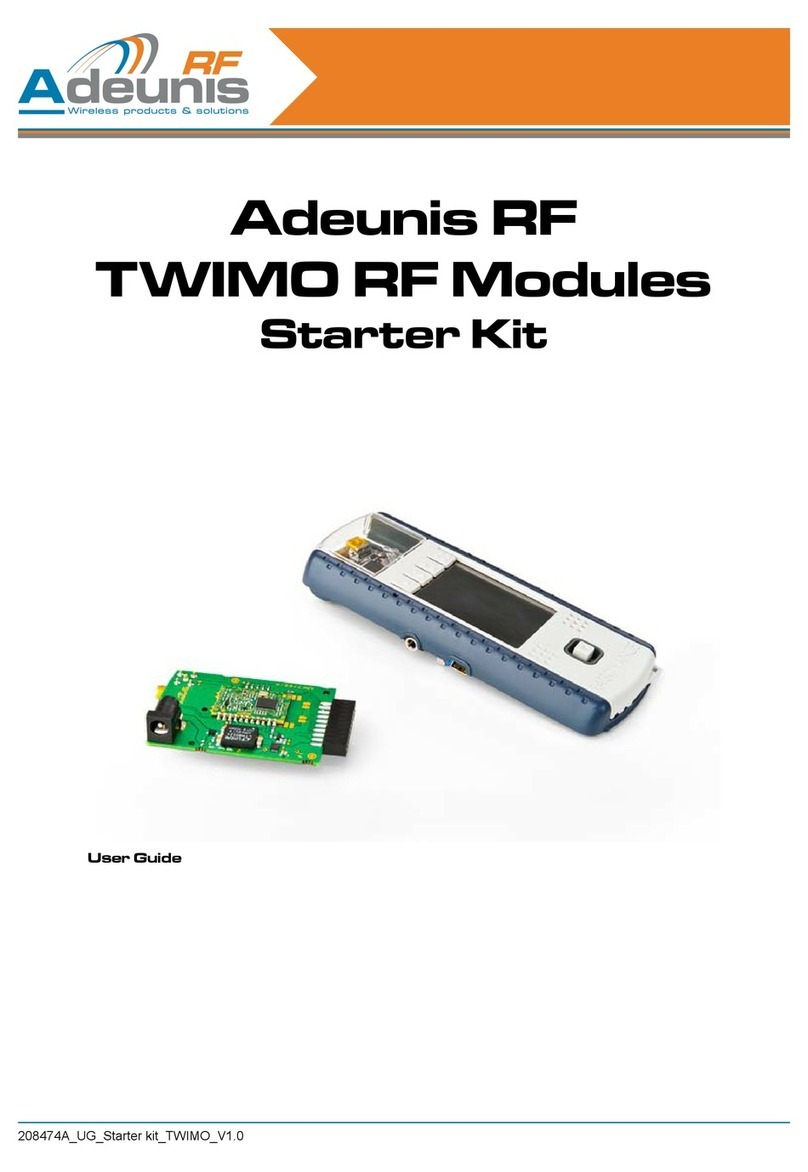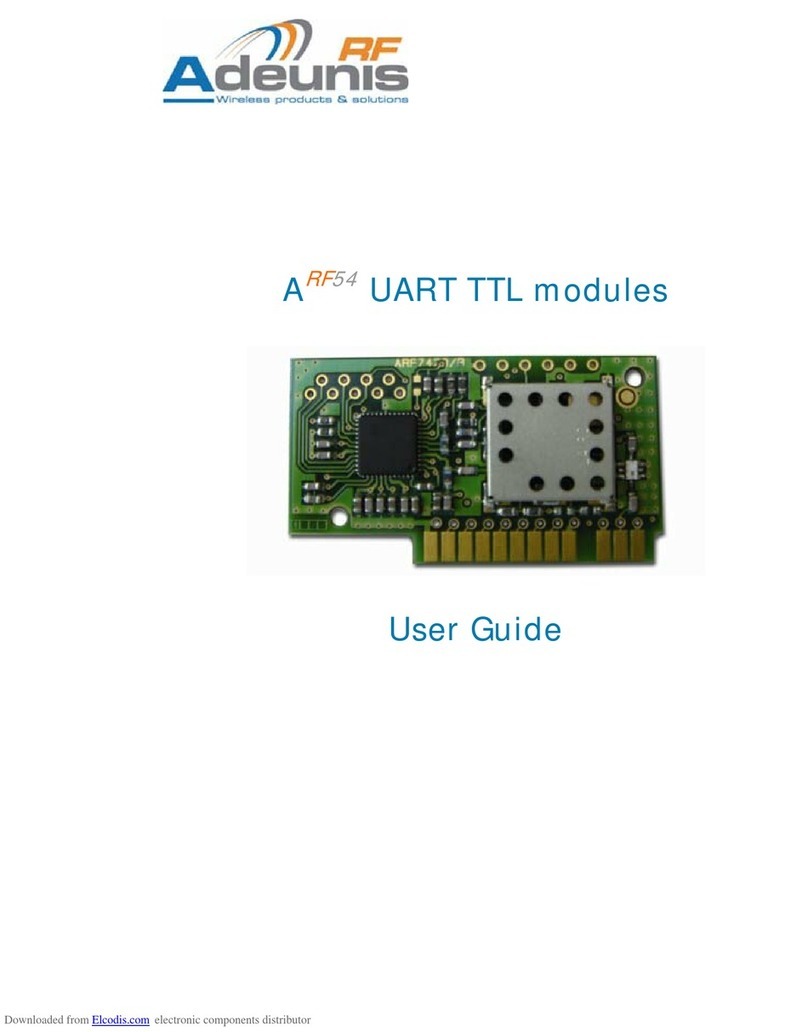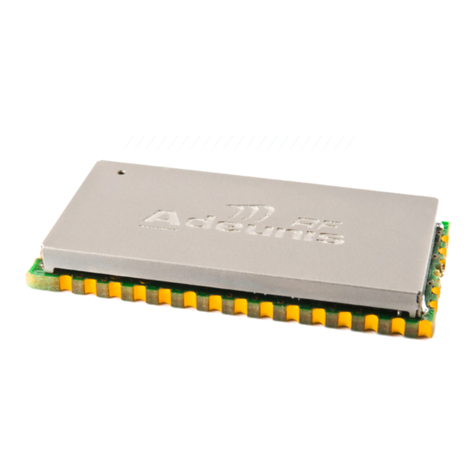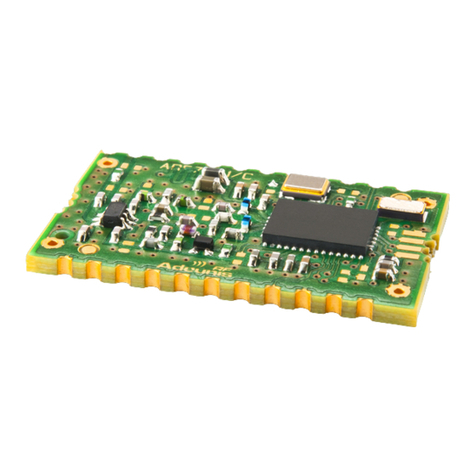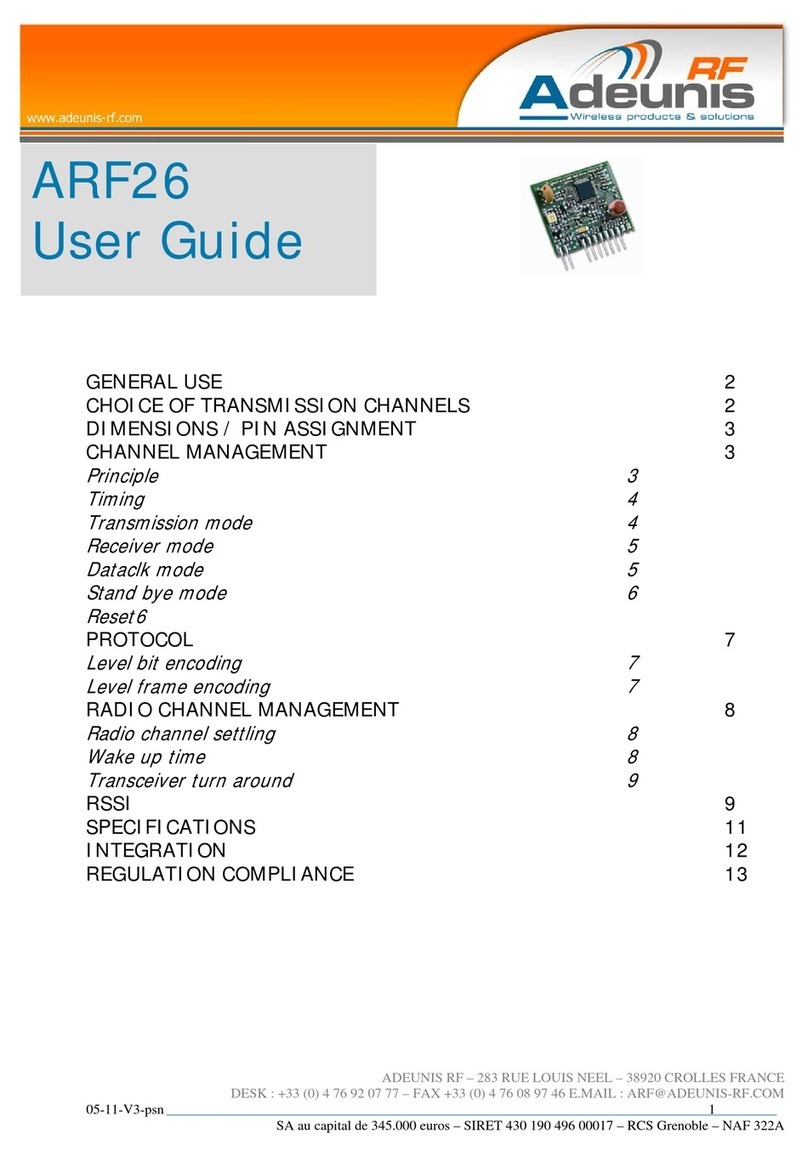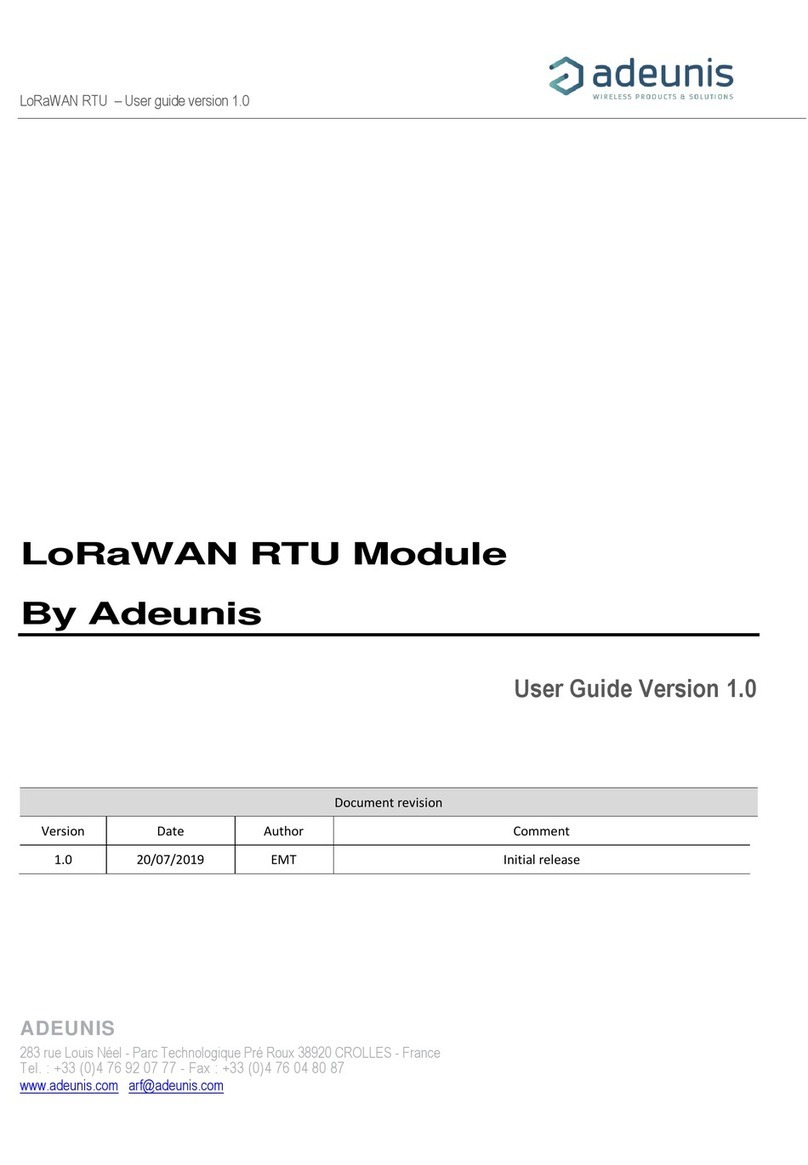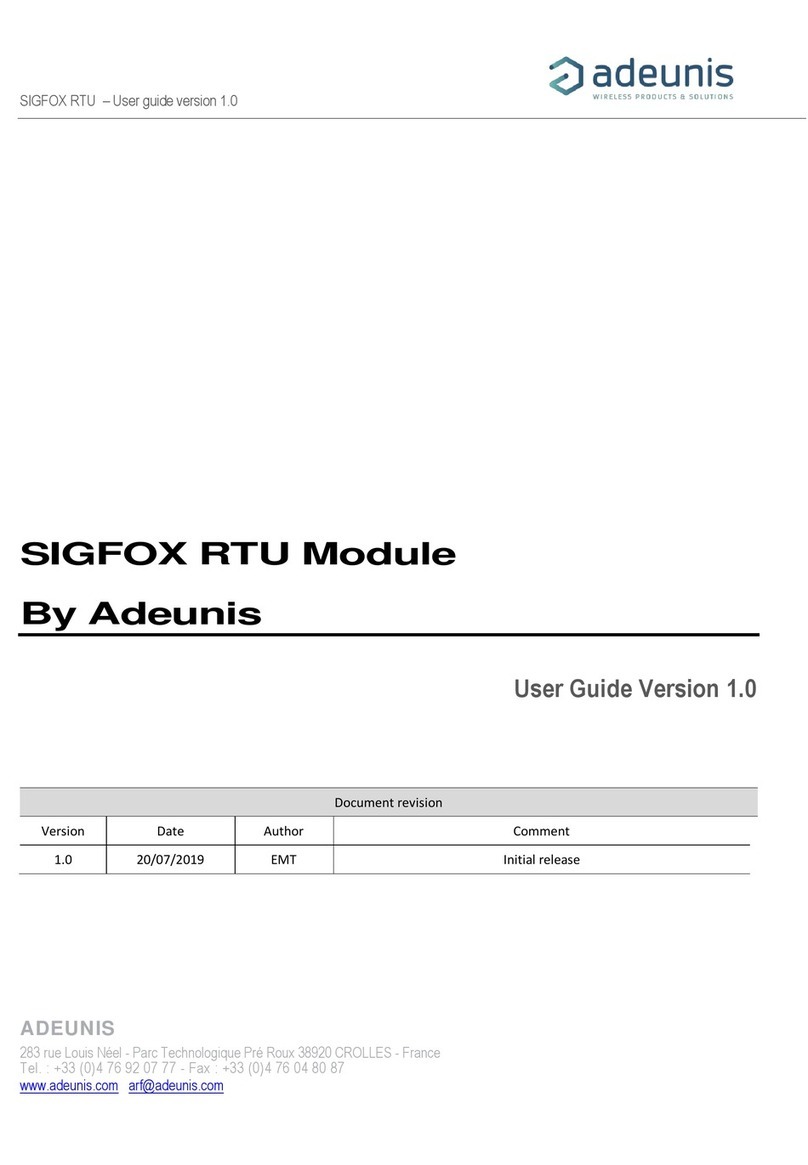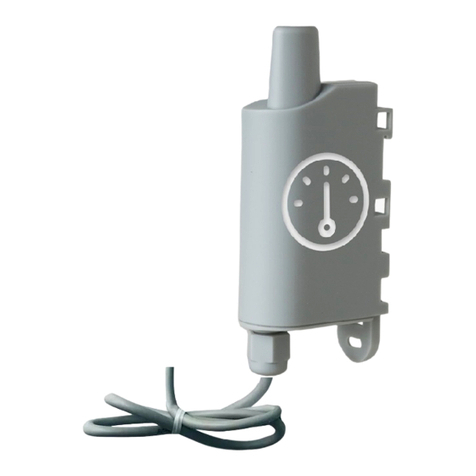
NARROW BAND - NB868 - User guide version V2.2.5 - Software version V2.3.0
6
Page of 25
INTRODUCTION
All rights to this manual are the exclusive property of ADEUNIS RF. All rights reserved. Copying this manual (without written permission from the
owner) via printing, copying, recording or by any other means, translating this manual (in full or partially) into any other language, including all
programming languages, using any electrical, mechanical, magnetic or optical devices, manually or any by other methods, is prohibited.
ADEUNIS RF reserves the right to change the technical specifications or functions of its products, or to cease manufacturing any of its products,
or to cease technical support for one of its products without notice in writing and urges its customers to make sure that the information they
have is valid.
ADEUNIS RF configuration software and programs are available free of charge in a non-modifiable version. ADEUNIS RF can make no gua-
rantees, including guarantees concerning suitability and applicability for a certain type of application. Under no circumstances can the manufac-
turer, or the distributor of an ADEUNIS RF program, be held liable for any damage caused by the use of the aforesaid program. Program names,
as well as all copyright relating to programs, are the exclusive property of ADEUNIS RF. Any transfer, granting of licences to a third party, leasing,
hire, transport, copying, editing, translation, modification into another programming language or reverse engineering are prohibited without
ADEUNIS RF’s prior written authorisation and consent.
ADEUNIS RF
283, rue Louis Néel
38920 Crolles
France
Telephone +33 (0)4 76 92 07 77
Fax +33 (0)4 76 08 97 46
Environmental recommendations
All superfluous packaging materials have been eliminated. We have done everything possible to make it easy to separate the packaging into
three types of materials: cardboard (box), expanded polystyrene (filler material) and polyethylene (packets, foam protective sheets). Your device
is composed of materials that can be recycled and reused if it is dismantled by a specialist company. Please observe local regulations concerning
the manner in which waste packaging material, used batteries and your obsolete equipment are disposed of.
Warnings
Valid for Narrow Band modules with the following references: ARF7763BA
Read the instructions in the manual.
The safety of this product is only guaranteed when it is used in accordance with its purpose.
Maintenance should only be carried out by qualified persons.
Please note, do not install the equipment close to a heat source or in damp conditions.
IMPORTANT : a minimum distance of 5cm is mandatory between two products functioning at 27dBm/500mW
Please note: for your own safety, you must ensure that the equipment is switched off before carrying out any work on it.
Please note: For your safety, the power supply circuit must be SELV (Safety Extra Low Voltage) and must be a limited power
sources.
Recommendations regarding use
• Before using the system, check that the power supply voltage shown in the user manual corresponds to your supply. If it
doesn’t, please consult your supplier.
• Place the device against a flat, firm and stable surface.
• The device must be installed in a location that is sufficiently ventilated so that there is no risk of internal heating and it must
not be covered with objects such as newspapers, cloths, curtains, etc.
• The device’s aerial must be free and at least 10 cm away from any conducting material.
